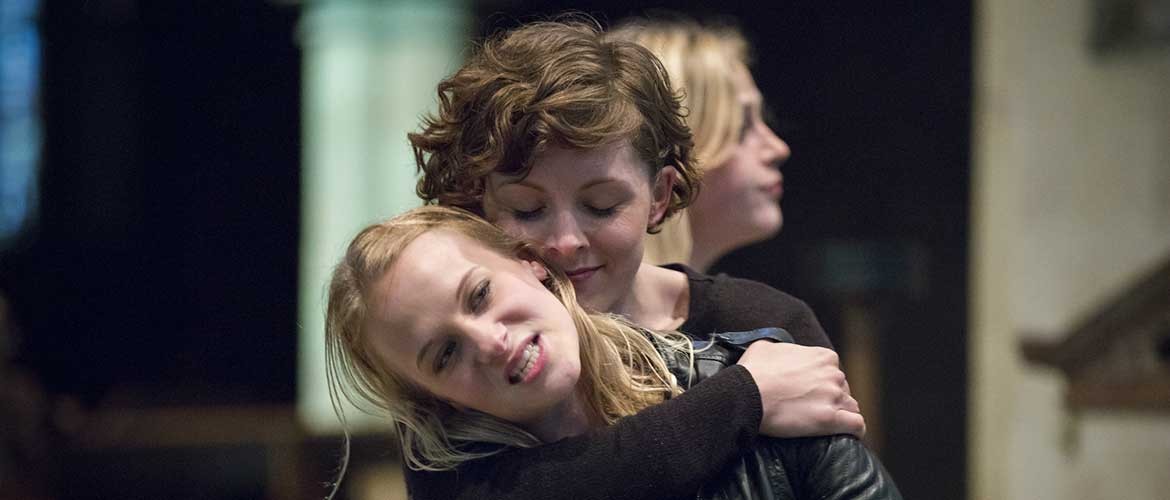St Olave’s Church
Until Sat May 23 @ 7.30pm with Sat matinees
£14-18
Tickets on Theatre Royal website
Over the last two weeks the York International Shakespeare Festival has been offering a wide-ranging mix of Shakespearean plays, performances, adaptations, and films across beautiful locations such as the Guildhall and De Grey Rooms.
It was the evocative 15th century ambience of St Olave’s Church which provided the stage for the timeless tale of Romeo & Juliet, as adapted by the Flanagan Collective.
On arrival, the loud rock music and spontaneous dancing creates a stark contrast with the incense-filled atmosphere of the church.
The play opens with capoeira fights backed by heavy beats. We soon realise that those characters we expected to be men, Romeo included, are played purely by a cast of women.

This choice has a declared political aim. In the words of the producers: “We’re in a position to help redress the gender imbalance on our stages.”
It is undoubtedly liberating to transform a play originally penned to be performed exclusively by male actors into a piece completely owned and delivered by women. However, the effect on the audience moves beyond an intellectual political statement.
The archetypical characters, freed from the restraints of gender, shine in the purity of their emotions: love, fear, hope, rage, and their innate hold on each of us transcending time, space, and personal situations.
As the collective explains, the play is
The all female cast is wholly credible in the variety of feminine perspectives that it portrays, and dynamically flexible in delivering individual and group choreographies, and beautiful choral harmonies enhanced by the perfect acoustics of the church.
While Amie Burns Walker as Juliet brilliantly enacts the vulnerability and feminine tenderness typical of her character, Emma Ballantine creates a remarkable female Romeo, simultaneously passionate and impetuous, yet nevertheless fragile and undeniably feminine.
The rest of the cast works perfectly in group dynamics, juggling multiple roles with agility.
The constant interaction with the audience, facilitated by a full use of the entire space including the altar, aisle and pews, reaches its peak of intimacy during the closing, tragic scene, when the whole church surrenders to the tender darkness of the inevitable finale.
This innovative performance brings a contemporary twist that will challenge your perspective on this timeless classic.
